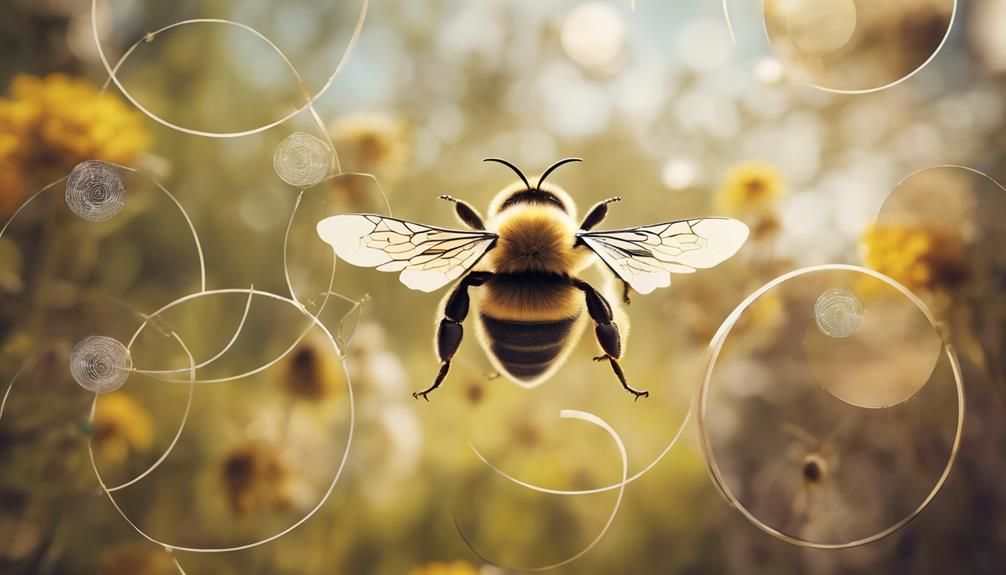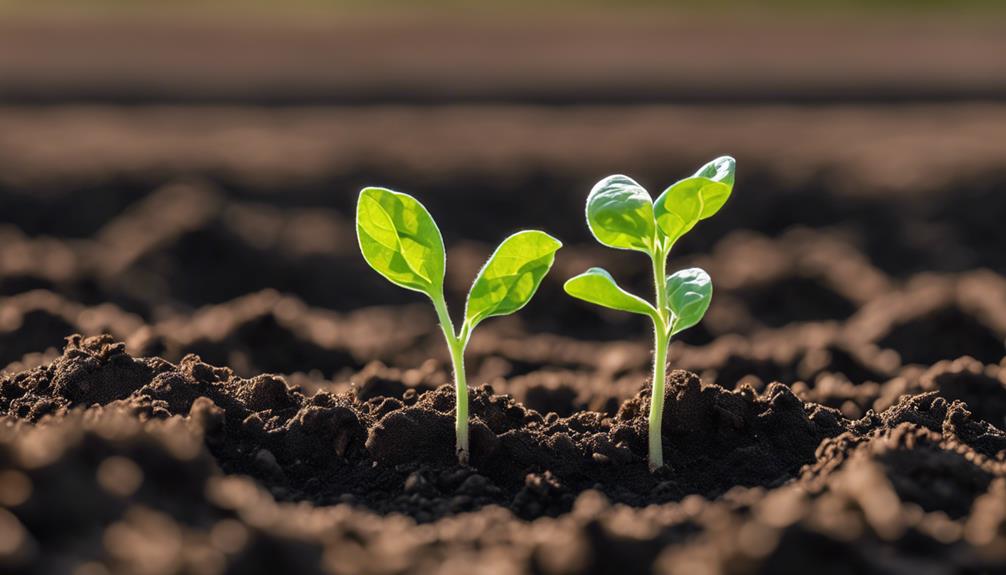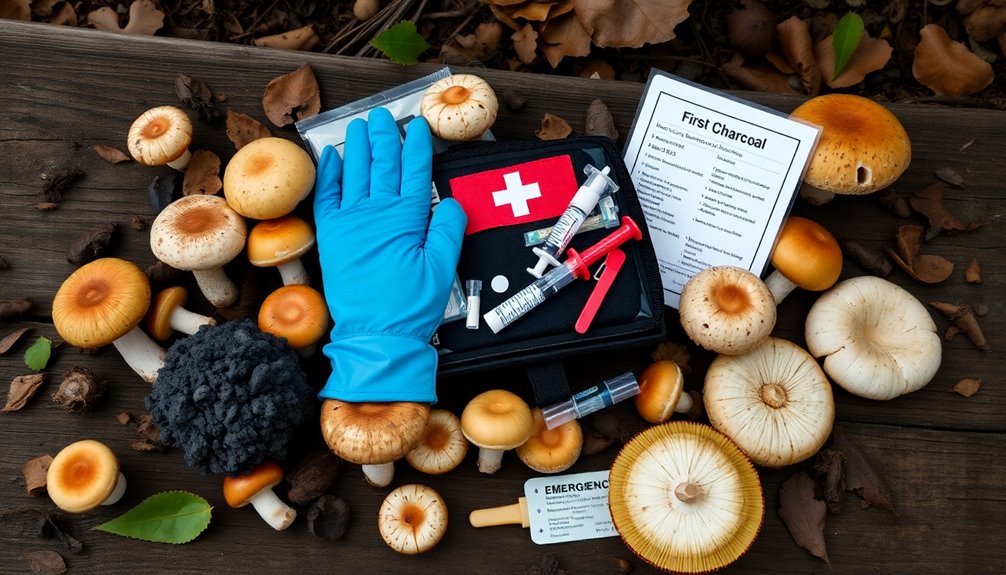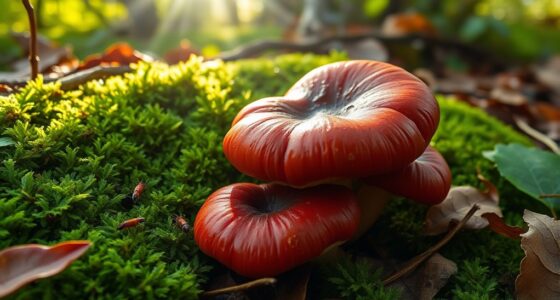You're wondering how far bees forage? Well, it varies depending on the type of bee! Honey bees typically forage within a 1-2 mile radius from their hive, but can travel up to 13.75 kilometers when food is scarce. Solitary bees usually travel only a few hundred meters, while bumble bees cover varying distances depending on the species. From crop pollination to lifelong flight distances, bees play an essential role in our ecosystem. Want to know more about how bees' foraging range impacts their survival and our food supply?
Key Takeaways
- Honey bees typically forage within a 1-2 mile radius from their hive, but can extend up to 13.75km when food is scarce.
- Solitary bees usually travel only a few hundred meters to find food, but some species can reach distances of several kilometers.
- Bumble bees cover varying foraging distances, with some species reaching up to 1,700m, while others average around 267.2m.
- The foraging range of bees is influenced by environmental factors such as weather, floral resources, and hive location.
- Bees can cover thousands of flights and miles over their lifetime, with some venturing up to 5 miles from the hive during foraging.
Foraging Distance of Honey Bees
As you observe honey bees in their natural habitat, you'll notice they typically forage within a 1-2 mile radius from their hive, but their range can extend up to 13.75km when food is scarce. This flexibility in their foraging range is essential for their survival, as they need to adapt to changing environmental conditions.
When you watch honey bees fly, you might assume they travel long distances to collect nectar and pollen. However, most frequently observed honey bee workers fly around 600-800 meters to collect food, which is a relatively short distance. On average, the mean foraging distance for honey bees is within a radius of 6km.
Bee foraging activity depends on the availability of profitable forage, so they'll fly farther when food is scarce. Understanding the foraging range of bees is important for beekeepers and gardeners, as it helps them provide the necessary resources for these essential pollinators. By recognizing the foraging distance of honey bees, we can better support their health and productivity.
Solitary Bees' Foraging Range

As you explore the foraging habits of solitary bees, you'll notice that their range is closely tied to their nesting site.
You'll find that solitary bees typically don't venture far, with most species traveling only a few hundred meters to find food, and some exceptions reaching up to several kilometers.
Now, let's examine the key factors that influence their foraging range, including nest proximity, varying distances, and resource availability.
Nest Proximity Matters
When it comes to solitary bees, you'll find that they typically don't stray far from home, with most species traveling only a few hundred meters at most from their nesting site to forage for food. This proximity to their hive is essential for their survival, as they need to return to their nest regularly to care for their young and store food.
| Bee Species | Maximum Foraging Distance |
|---|---|
| Euplasia surinamensis | 24 km |
| Melipona fasciata | 2.4 km |
| Trigonini members | > 1 km |
Understanding the foraging range of solitary bees is critical for maintaining healthy populations and supporting their important role in pollination. By recognizing the significance of nest proximity, you can create bee-friendly habitats that provide the necessary resources for these essential pollinators. By doing so, you'll be supporting the health of local ecosystems and contributing to the preservation of these incredible creatures.
Foraging Distance Varies
You'll find that solitary bees' foraging distances vary greatly, ranging from a few hundred meters to several kilometers. While honey bees need to travel farther to gather nectar and pollen, solitary bees typically have a more localized foraging range. In fact, most solitary bee species generally travel only a few hundred meters at most to forage, emphasizing their localized foraging behavior.
However, some species can cover impressive distances. For instance, some euglossine bees have been recorded traveling up to 24km in search of food sources. Melipona fasciata bees can travel up to 2.4km for foraging, while Trigonini members cover distances over 1km.
The maximum recorded foraging distance for Euplasia surinamensis, a type of euglossine bee, is 23km, showcasing their long-distance navigation abilities. Distance Bees, like these, demonstrate remarkable foraging range capabilities.
Understanding the foraging range of honey and solitary bees can help us better appreciate these important pollinators. By recognizing their unique characteristics, we can better support their survival and the ecosystems they inhabit.
Resource Availability Impacts
The availability of resources in their surroundings greatly influences the foraging range of solitary bees, with some species adapting to scarcity by expanding their search area. You might wonder, what happens when resources are scarce?
Some solitary bees, like Euglossine bees, will travel up to 24km to find food, while others, like Melipona fasciata, will travel up to 2.4km. Trigonini members will forage over 1km away from their nests. But generally, solitary bees tend to stick to a foraging range of a few hundred meters. This limited range is largely due to the importance of local habitat for these bees.
When resources are plentiful, they can focus on nectar collection within a smaller area. In contrast, honey bees often have a more extensive foraging range due to their social structure and colony needs. Understanding the impact of resource availability on solitary bees' foraging range can help you better support these important pollinators in your garden or community.
Bumble Bees' Daily Flight

As you follow the daily flight of bumble bees, you'll find that some species, like the desert subspecies B. pensylvanicus sonorus, can ascend an astonishing 1,000 vertical meters in a single day in search of food. This remarkable feat highlights the importance of understanding their daily flight patterns and foraging habits.
When it comes to daily foraging distances, you might be surprised to learn that:
- Most bumble bee species, such as B. pascuorum, travel over distances less than 312m to forage.
- Desert bumble bees are known to cover distances of 600-1,700m for foraging activities.
- B. terrestris workers have a mean foraging distance of 267.2m, with nearly 40% foraging within 100m around the nest.
These statistics demonstrate the varying ranges of bumble bees, which can greatly impact nest density and resource availability. By understanding their daily flight patterns and foraging distances, we can better appreciate the complex social dynamics of these important pollinators.
Measuring Foraging Range Methods

Now that you've explored the daily flight of bumble bees, it's time to examine how researchers measure their foraging range. Researchers commonly track bumble bee movements using harmonic radar, which allows them to study the distance and patterns associated with their foraging trips. By comparing these behaviors with other pollinators, such as wasp foraging behavior, scientists can gain a deeper understanding of the ecological roles these insects play in their respective habitats. Insights from these studies help inform conservation efforts by determining the optimal foraging ranges and habitat requirements for sustaining healthy pollinator populations. Additionally, understanding the wasp foraging duration provides a useful comparison to bumble bee behaviors, revealing differences in energy expenditure and resource collection strategies. These insights not only shed light on the varying needs of different pollinator species but also underscore the importance of diverse habitats that support wasps and bumble bees alike. Ultimately, research on foraging patterns contributes to designing conservation strategies that ensure the survival of these crucial pollinators in rapidly changing ecosystems.
You'll learn about three key methods: Mark-Release-Recapture, Radio Frequency Identification, and Observation of Bee Behavior, each providing valuable insights into the bees' foraging habits.
Mark-Release-Recapture
By employing the Mark-Release-Recapture method, you can accurately measure the foraging range of bees, gaining insight into their travel distances and behavior. This method involves marking bees, releasing them, and then recapturing them to determine how far they've traveled.
By tracking the movement of marked bees, researchers can gather valuable data on their foraging behavior and habit utilization.
Here are some key benefits of the Mark-Release-Recapture method:
- Provides accurate measurements of bee foraging ranges
- Offers insights into bee behavior and travel distances
- Helps researchers understand how bees utilize their habitats
Radio Frequency Identification
You can track bee movements with remarkable precision using Radio Frequency Identification (RFID) technology, which involves attaching tiny RFID tags to individual bees. This innovative method allows researchers to monitor the foraging range of bees with incredible accuracy.
By tracking the movements of tagged bees, scientists can determine the distances bees travel from their hive to collect food, providing valuable insights into their foraging behavior.
RFID technology has revolutionized the study of bee behavior, enabling researchers to study the impact of environmental factors on bee foraging patterns and distances. For instance, scientists can analyze how changes in temperature, humidity, or pesticide use affect the foraging range of different bee species.
With RFID, researchers can gather precise data on how far bees travel and how often they visit certain locations, shedding light on their complex social behavior. By understanding the foraging range of bees, scientists can develop strategies to promote bee health and conserve these essential pollinators.
Observation of Bee Behavior
As you explore the world of bee foraging, you'll discover that researchers have developed various methods to measure the foraging range of bees, including marking and observing them in their natural habitat. By doing so, they can gain valuable insights into bee behavior and understand how far these busy creatures travel to gather nectar and pollen.
Through observation, scientists can identify patterns and preferences in bee behavior. For instance, some studies suggest that bumblebees may have a preference for foraging at specific distances from their nest.
Some methods used to measure foraging range include:
- Utilizing genetic markers to quantify the foraging range and nest density of bumblebees
- Conducting experiments to determine the foraging range of bees in different environments
- Emphasizing the importance of local habitat in understanding the foraging behavior of solitary bees
Crop Pollination and Foraging

In the intricate dance of crop pollination and foraging, honey bees emerge as the vital heroes, responsible for pollinating a staggering array of crops that we rely on for sustenance.
As you explore the world of bee foraging, you'll discover that honey bees fly impressive distances to gather nectar and pollen from crops like almonds, apples, and blueberries. This foraging behavior not only supports biodiversity and ecosystem health but also enhances the productivity and yield of these crops.
By collecting nectar and pollen, bees inadvertently transfer pollen, facilitating cross-pollination and ensuring the genetic diversity of plants. This process leads to stronger and more resilient crops.
You might be surprised to learn that farmers and beekeepers work together to optimize bee foraging patterns, ensuring efficient pollination services for a variety of crops.
As you explore further into the world of bee foraging, you'll appreciate the important role honey bees play in putting food on your table.
Bees' Lifelong Flight Distance

Honey bees, those tiny but mighty flyers, clock an impressive number of miles over their lifetime, with some individuals covering thousands of flights to gather nectar from flowers. As you explore the world of bees, it's intriguing to contemplate the sheer distance they travel in their lifetime.
When it comes to their lifelong flight distance, bees are incredibly prolific flyers.
- Thousands of flights add up to a remarkable number of miles, with some bees venturing up to 5 miles from their hive.
- Their foraging range is essential to their survival, as they need to balance the energy expended during flight with the nectar and pollen they gather.
- Regular foragers tend to focus on efficient foraging close to the hive, minimizing energy expenditure while maximizing their haul.
This remarkable flying ability is fundamental for the colony's survival, as nectar serves as an essential energy source for the entire colony.
Environmental Factors' Impact

Environmental factors, such as wind, rain, and heat, can greatly influence the distance you'll find bees flying to gather nectar, with some hives experiencing more dramatic impacts than others.
As you might expect, weather conditions can profoundly affect bees' flight distances. For instance, strong winds can make it harder for bees to fly, reducing their range. On the other hand, hives located near uniform floral resources can enhance bees' foraging efficiency, allowing them to collect nectar more quickly.
Additionally, hive locations near water, airports, or industrial areas can increase bees' flight range due to the availability of abundant floral resources. You might be surprised to learn that roads, parking lots, and woodlands near hives can also impact bees' flight distances.
When bees have access to abundant floral resources, they can fill their larders more quickly, affecting their foraging range. By understanding how environmental factors influence bees' flight distances, you can better appreciate the complexities of bee behavior and the importance of preserving their habitats.
Frequently Asked Questions
How Far Do Bees Travel to Forage?
You're wondering how far bees travel to forage? Well, honey bees typically go 1-2 miles, but can venture up to 5 miles if needed, while bumble bees stick to 100-600 meters and solitary bees can travel an impressive 24km!
What Is the Range of a Bee Forage?
You think you're stuck in a small world, but your curiosity takes you on a wild ride! When it comes to foraging, you'll be surprised to know that bees can travel anywhere from a few hundred meters to a whopping 24 kilometers!
How Far Away Can a Bee Find Its Hive?
You'll be amazed that you can find your way back to the hive from up to 5 miles away, thanks to your impressive navigation skills, which are influenced by the hive's location and surroundings.
What Is the Foraging Radius of Honey Bees?
As you ponder the foraging radius of honey bees, imagine a busy bee flying 5 miles to collect food – a remarkable feat! Typically, they forage within a 1-2 mile radius from their hive, but some venture up to 6 kilometers for profitable forage.
Conclusion
As you stand in your backyard, surrounded by blooming flowers, a busy bee flits from petal to petal, collecting nectar for its hive.
It's likely that bee traveled from a hive nearby, but did you know it might've flown from over a mile away? Bees can cover impressive distances in their daily foraging, and understanding their range is essential for effective crop pollination.
By recognizing the incredible feats of these tiny creatures, we can better appreciate and protect these essential pollinators.










